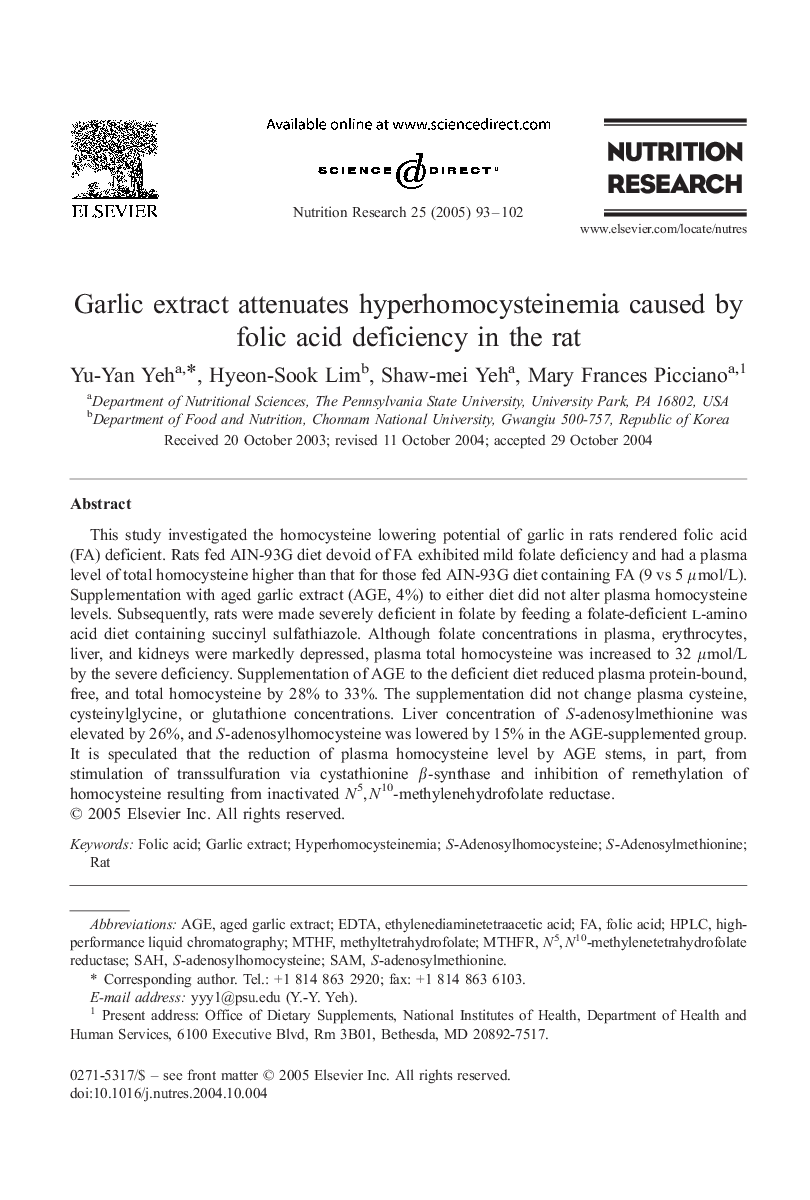| Article ID | Journal | Published Year | Pages | File Type |
|---|---|---|---|---|
| 9119098 | Nutrition Research | 2005 | 10 Pages |
Abstract
This study investigated the homocysteine lowering potential of garlic in rats rendered folic acid (FA) deficient. Rats fed AIN-93G diet devoid of FA exhibited mild folate deficiency and had a plasma level of total homocysteine higher than that for those fed AIN-93G diet containing FA (9 vs 5 μmol/L). Supplementation with aged garlic extract (AGE, 4%) to either diet did not alter plasma homocysteine levels. Subsequently, rats were made severely deficient in folate by feeding a folate-deficient l-amino acid diet containing succinyl sulfathiazole. Although folate concentrations in plasma, erythrocytes, liver, and kidneys were markedly depressed, plasma total homocysteine was increased to 32 μmol/L by the severe deficiency. Supplementation of AGE to the deficient diet reduced plasma protein-bound, free, and total homocysteine by 28% to 33%. The supplementation did not change plasma cysteine, cysteinylglycine, or glutathione concentrations. Liver concentration of S-adenosylmethionine was elevated by 26%, and S-adenosylhomocysteine was lowered by 15% in the AGE-supplemented group. It is speculated that the reduction of plasma homocysteine level by AGE stems, in part, from stimulation of transsulfuration via cystathionine β-synthase and inhibition of remethylation of homocysteine resulting from inactivated N5,N10-methylenehydrofolate reductase.
Keywords
Related Topics
Life Sciences
Biochemistry, Genetics and Molecular Biology
Endocrinology
Authors
Yu-Yan Yeh, Hyeon-Sook Lim, Shaw-mei Yeh, Mary Frances Picciano,
